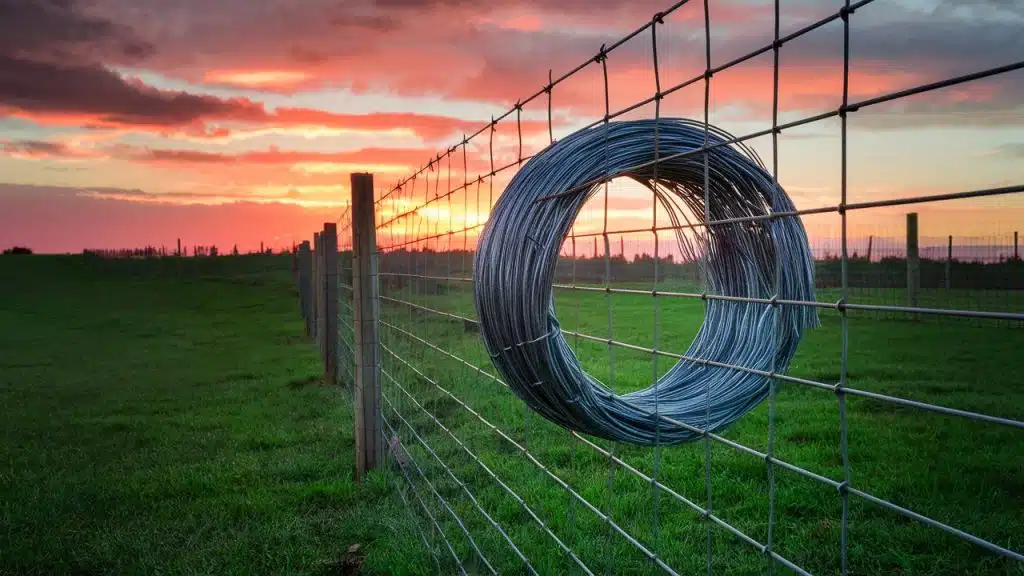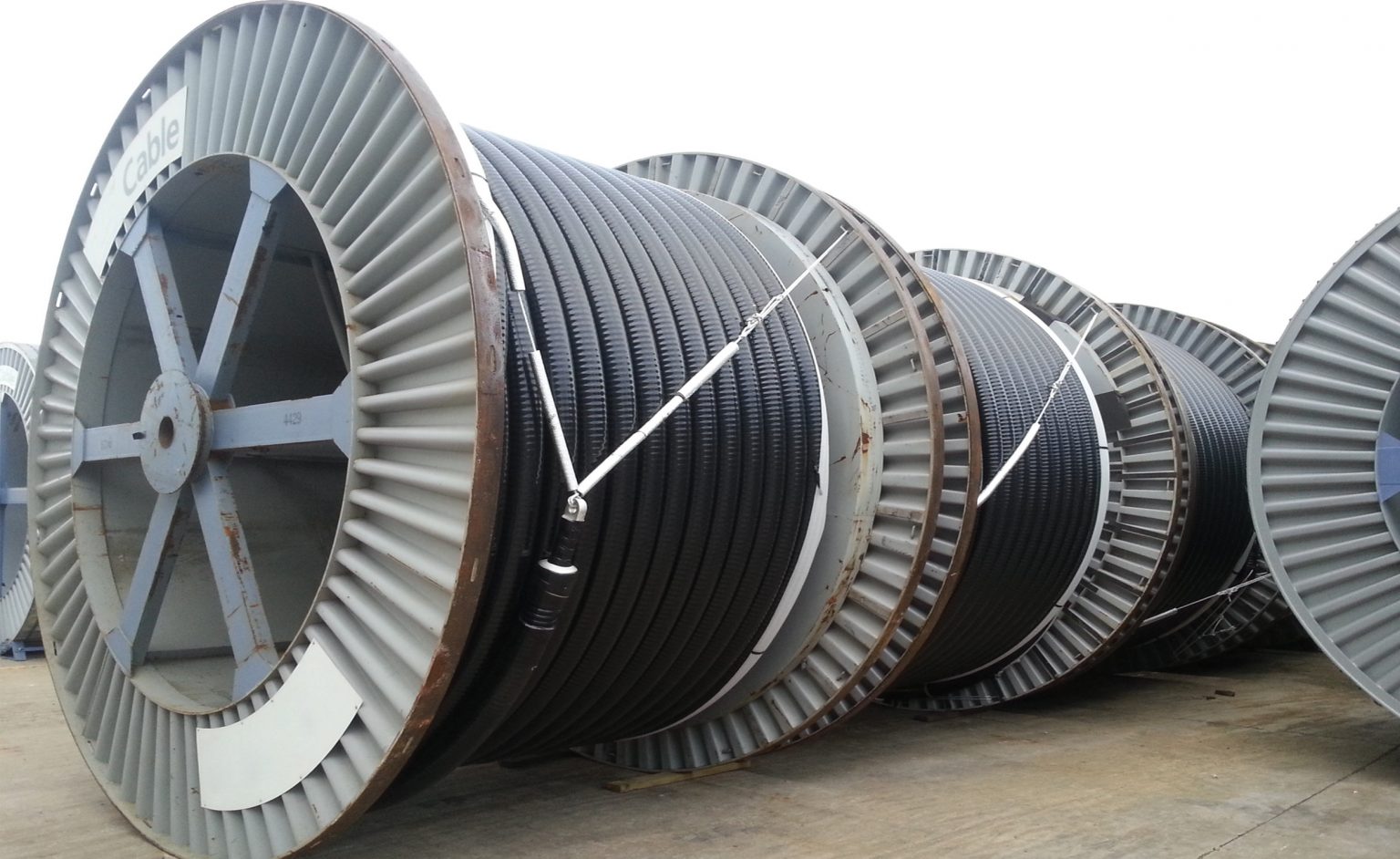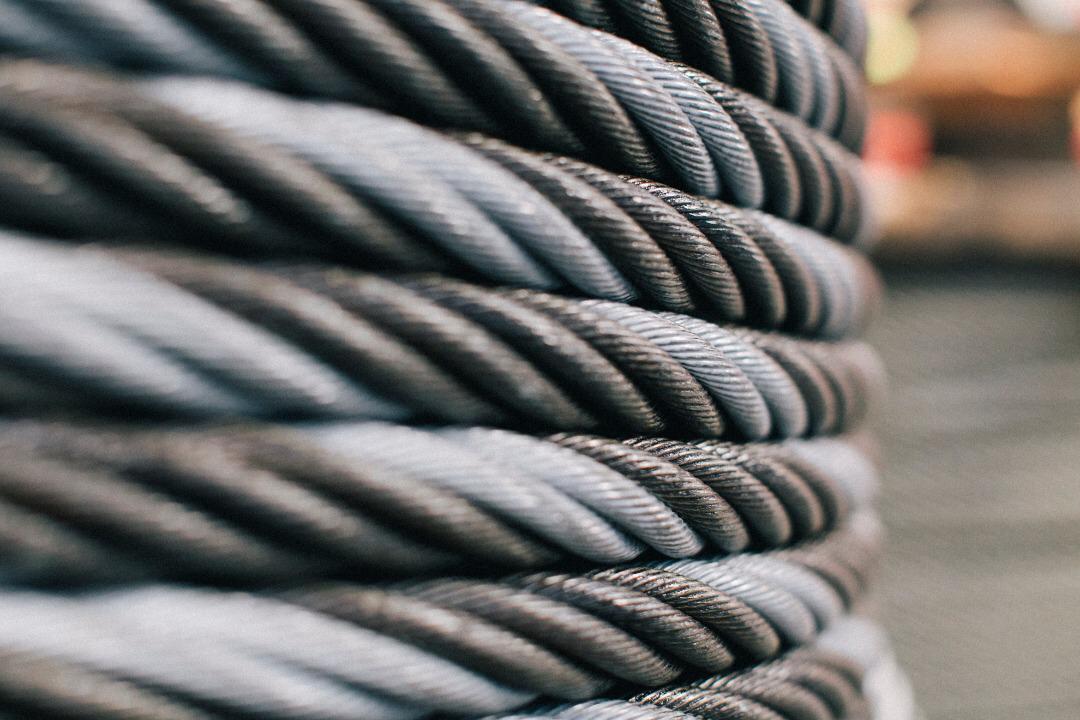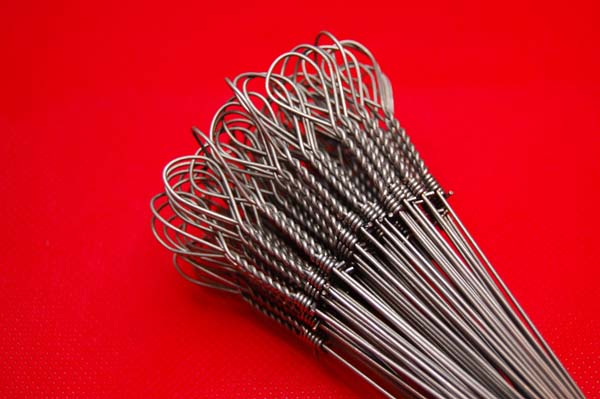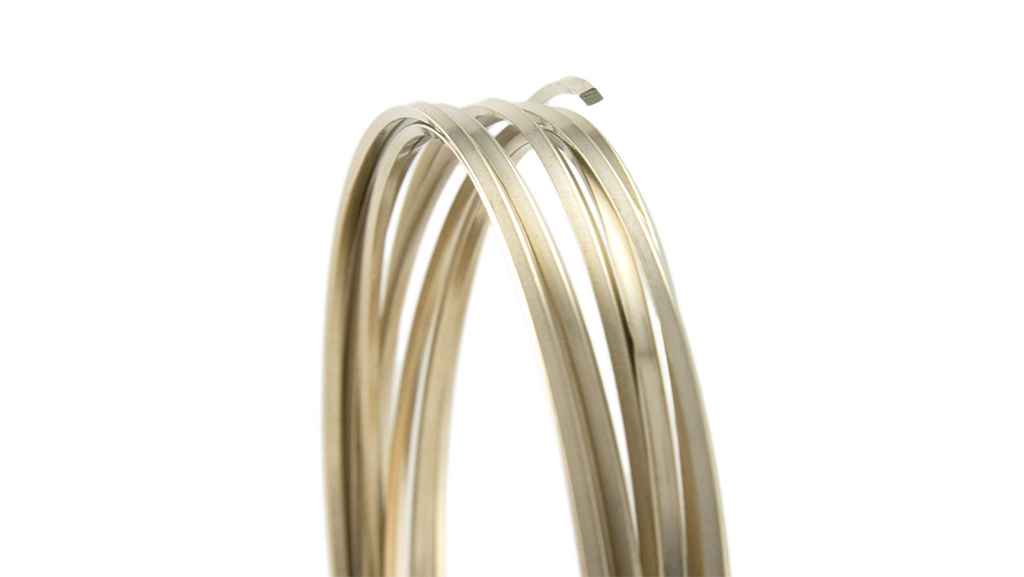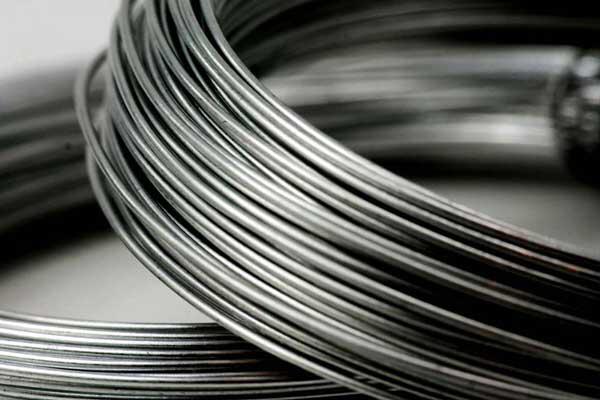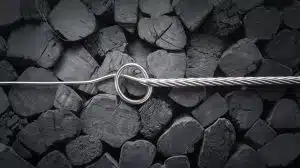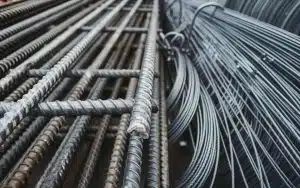Galvanized Wire in the Fencing Industry: Types, Applications, and Installation Methods
In today’s world, maintaining security and privacy is of utmost importance. One of the most effective ways to protect personal or commercial properties and spaces is by using appropriate fences. Among the various materials used in the fencing industry, galvanized wire is recognized as one of the most widely used. In this article, we intend to comprehensively examine the types of galvanized wire, their applications, and installation methods in fencing.
Definition of Galvanized Wire:
Galvanized wire is a type of steel wire that is coated with a layer of zinc to protect against rust and corrosion. The galvanizing process is carried out using the hot-dip galvanizing method, during which the wire is immersed in a bath of molten zinc. This protective zinc coating enhances the wire’s resistance to weathering and increases its lifespan.
Importance and Applications of Galvanized Wire in the Fencing Industry:
Galvanized wire has numerous applications in the fencing industry and has gained popularity for several reasons. Some of the most important reasons for the significance of using galvanized wire in fencing are:
- High Durability and Resistance: The zinc coating on galvanized wire provides high resistance against moisture, salt, and other corrosive environmental factors. This property increases the fence’s lifespan and reduces the need for maintenance and repairs.
- Security and Strength: Galvanized wire, especially the barbed type, provides significant security for fenced areas. The strength of these wires minimizes the possibility of unauthorized entry and intrusion.
- Cost-Effectiveness: Compared to other fencing materials such as wood or aluminum, galvanized wire is considered a more economical option. This makes its use justifiable in large-scale fencing projects.
- Ease of Installation and Implementation: Installing fences using galvanized wire is easier compared to other methods and does not require complex equipment or skills. This feature increases the speed of executing fencing projects.
- Versatility: Galvanized wire is produced in various types, each with different applications. This diversity allows for the use of this product in a wide range of fencing projects.
In the following sections of this article, we will delve into a more detailed examination of the types of galvanized wire and their applications in the fencing industry.

Types of Galvanized Wire Used in Fencing
After familiarizing ourselves with the concept of galvanized wire and the importance of its application in the fencing industry, in this section, we will introduce the different types of this widely used product. Galvanized wire is produced and supplied in three main types, each with unique characteristics and applications. These three types are: plain galvanized wire, barbed galvanized wire, and galvanized mesh wire.
Plain Galvanized Wire:
Plain galvanized wire is the most basic type of this product, consisting of a single strand of galvanized steel wire. The diameter of these wires typically ranges from 1 to 5 millimeters. Plain galvanized wire has various applications in the fencing industry and is used in the construction of various fences and barriers due to its flexibility and easy formability.
Barbed Galvanized Wire:
Barbed galvanized wire is a more advanced type of wire that, in addition to the galvanized coating, features sharp barbs at regular intervals. These barbs significantly increase the fence’s security and prevent the passage of unwanted individuals or animals. Galvanized barbed wire is an ideal choice for fencing areas that require a higher level of protection, such as prisons, military bases, national borders, or zoos.
Galvanized Mesh Wire:
Galvanized mesh wire is created by weaving galvanized wires into a regular rectangular or square-shaped grid. The size of the mesh openings varies depending on its application and can range from a few millimeters to several centimeters. Galvanized mesh wire has extensive applications in fencing sports facilities, gardens, livestock and poultry farms, as well as in the construction of cages and window guards. This type of wire, in addition to creating a physical barrier, also provides adequate visibility.
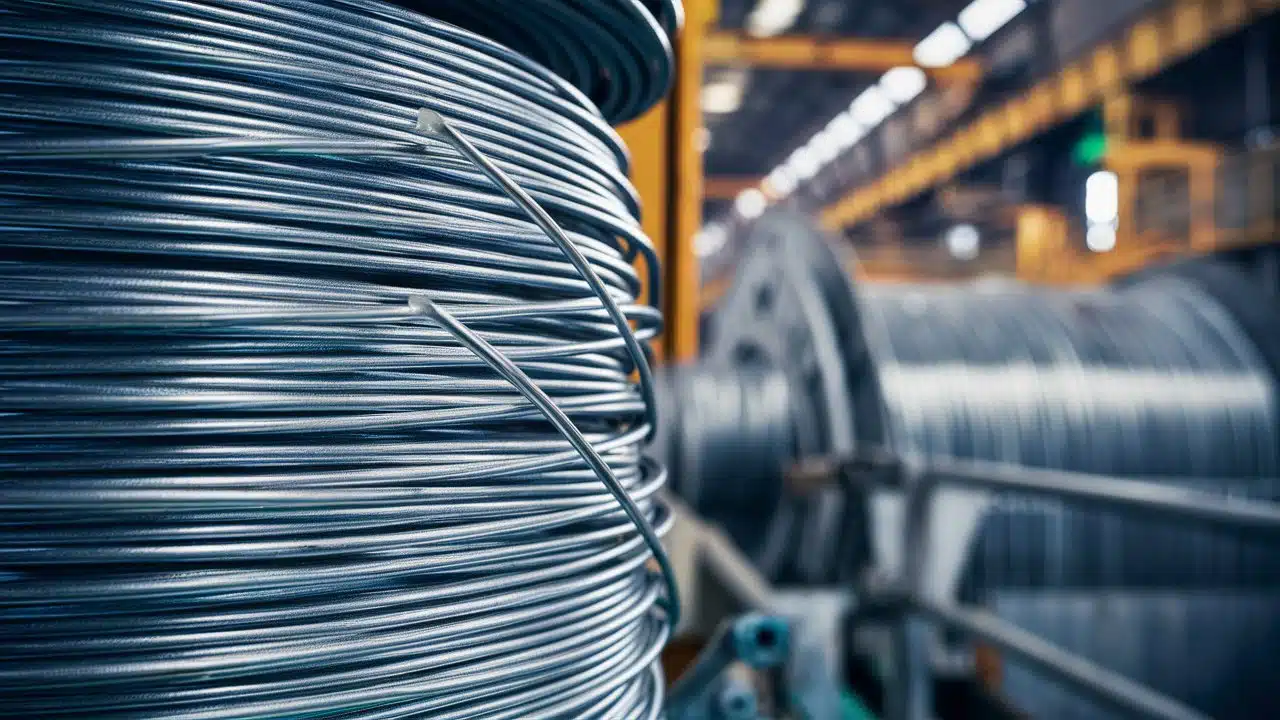
Comparison of Features and Applications of Each Type of Galvanized Wire:
Each type of galvanized wire is used in different situations based on its specific characteristics. Plain wire, due to its simplicity and flexibility, is used in general fencing applications. Barbed wire is suitable for locations that require a higher level of security. Meanwhile, mesh wire, in addition to creating a barrier, also provides good visibility and is a suitable option in situations where sight restriction is not important.
The choice of galvanized wire type depends on the needs and requirements of the fencing project. In the following section, we will examine the general advantages and applications of galvanized wire in the fencing industry.
The table below shows the types of galvanized wire used in fencing, along with the characteristics, applications, and advantages of each type:
|
Type of Galvanized Wire |
Characteristics |
Applications |
Advantages |
|
Plain Galvanized Wire |
|
|
|
|
Barbed Galvanized Wire |
|
|
|
|
Galvanized Mesh Wire |
|
|
|
This table summarizes the characteristics, applications, and advantages of the three main types of galvanized wire used in the fencing industry. Each type of galvanized wire is suitable for different applications based on its specific characteristics and offers unique advantages.

Advantages of Using Galvanized Wire in Fencing
Due to its unique properties, galvanized wire is considered an ideal choice for use in the fencing industry. In this section, we will comprehensively examine the advantages of using galvanized wire in fencing and analyze the reasons for its popularity.
High Resistance to Corrosion and Rust
One of the most significant advantages of galvanized wire is its high resistance to corrosion and rust. The galvanizing process, which involves coating the wire with a layer of zinc, protects the wire from corrosive elements. This property ensures that fences made from galvanized wire maintain their durability and performance even in adverse weather conditions and humid environments.
Long-Lasting Durability of the Fence
Using galvanized wire in fencing significantly increases the lifespan and durability of the fence. Galvanized wire fences can maintain their effectiveness for years without the need for major repairs or replacement. This feature reduces long-term maintenance costs and justifies the initial investment in fencing.
Adequate Strength and Security of the Fence
In addition to its resistance to corrosion, galvanized wire also possesses high tensile strength. This property ensures that fences constructed from this material exhibit appropriate resistance against applied forces and attempts at intrusion. The strength of galvanized wire guarantees the security of the fenced area and prevents unauthorized entry by individuals or animals.
Resistance to Weather Conditions
Galvanized wire fences demonstrate high resistance to a wide range of weather conditions, including rain, snow, intense sunlight, and wind. This characteristic ensures the performance and longevity of the fence in regions with varying climates. Moreover, resistance to ultraviolet rays from the sun prevents premature discoloration and degradation of the wire.
Relatively Low Cost Compared to Other Materials
Compared to other materials used in fencing, such as wood, aluminum, or PVC, galvanized wire has a relatively lower cost. This feature, along with its high durability and longevity, makes galvanized wire a cost-effective option for fencing projects of various scales. Using this material allows for fencing large areas without incurring exorbitant expenses.
Galvanized wire, considering its numerous advantages, including resistance to corrosion and rust, long-lasting durability, adequate strength and security, resistance to weather conditions, and relatively low cost, is considered an ideal choice for use in the fencing industry. These properties ensure the long-term performance of fences and justify the investment in this material.

Applications of Galvanized Wire in the Fencing Industry
Galvanized wire has found extensive applications in the fencing industry due to its outstanding properties such as strength, durability, and cost-effectiveness. In this section, we will comprehensively examine the uses of galvanized wire in various areas of fencing.
Fencing Residential and Commercial Areas
One of the most common applications of galvanized wire is in fencing residential and commercial areas. This material allows for the creation of secure, durable, and aesthetically pleasing fences around homes, villas, apartments, and office buildings. Galvanized wire fences not only provide security and maintain privacy but also add a suitable visual appeal to the environment.
Fencing Farms, Orchards, and Livestock Enclosures
Galvanized wire is an ideal choice for fencing farms, orchards, and livestock enclosures. This material creates a clear boundary, preventing the intrusion of wild animals and theft of crops. Additionally, galvanized wire fences facilitate the management and control of livestock by preventing their escape. The high durability and resistance to weather conditions make this material highly suitable for use in agricultural and livestock environments.
Fencing Parks and Green Spaces
Galvanized wire is a suitable choice for fencing parks, gardens, and other urban green spaces. Fences made from this material not only create a clear demarcation and prevent unauthorized entry during off-hours but also maintain the natural and beautiful appearance of the environment. Moreover, the strength and durability of galvanized wire prevent damage to the green space from external factors and reduce maintenance costs.
Fencing Factories and Warehouses
Factories, warehouses, and other industrial centers require robust and reliable fencing due to the high importance of security. Galvanized wire, considering its strength, resistance to corrosion, and impermeability, is an ideal option for fencing these facilities. Galvanized wire fences not only provide physical security but also restrict access to sensitive areas and prevent theft of equipment and products.
Border and Security Fences
Galvanized wire has extensive use in creating border fences between countries and sensitive security zones. This material, due to its high strength and resistance to intrusion attempts, enables the creation of powerful physical barriers. Galvanized wire fences are often combined with other security equipment such as surveillance cameras and motion sensors to ensure the highest level of security.
Galvanized wire, owing to its outstanding features such as strength, durability, resistance to corrosion, and reasonable cost, has found diverse applications in the fencing industry. This material is used in various domains, including fencing residential and commercial areas, farms and orchards, parks and green spaces, factories and warehouses, as well as border and security fences. Choosing galvanized wire for fencing projects not only ensures security and creates clear boundaries but also guarantees visual appeal and long-term durability of the structure.
Installation of Fences Using Galvanized Wire
Proper installation of fences using galvanized wire plays a crucial role in the strength, durability, and long-term performance of the structure. In this section, we will examine the step-by-step process of installing a fence with galvanized wire and highlight key points at each stage.
Required Tools and Equipment
Before starting the fence installation process, it is necessary to gather the required tools and equipment. Some of the most important tools needed include:
• Galvanized wire of appropriate length and diameter
• Metal or concrete posts for fence installation
• Wire tensioning tools such as pulleys and hand-operated winches
• Pliers, wire cutters, and protective gloves
• Measuring tape, level, and string line for determining the fence line
• Shovel and pickaxe for digging post holes
Site Selection and Preparation
Before installing the fence, you should determine the exact route of the fence and prepare the ground for installing the posts. Consider the following points at this stage:
• Use a measuring tape and string line to mark the precise path of the fence.
• If necessary, clear any weeds or obstructive bushes from the fence line.
• Using a shovel and pickaxe, dig holes of appropriate depth for installing the posts.
• Adjust the spacing between the holes according to the height and type of fence.
Installing Fence Posts and Pillars
After preparing the ground, it’s time to install the fence posts and pillars. At this stage, consider the following points:
• Place the metal or concrete posts into the dug holes.
• Using a level, ensure that the posts are vertically aligned.
• Secure the posts in place using concrete or metal bases.
• Allow sufficient time for the concrete to dry.
Stretching and Installing Galvanized Wire
After establishing the posts, the next step is stretching and installing the galvanized wire. Key points at this stage include:
• Start the wire from one post and stretch it towards the next post.
• Using wire tensioning tools, tighten the wire sufficiently to make it taut and secure.
• Attach the wire to the posts at regular intervals and ensure its stability.
• For added strength, you can use specialized clamps to connect the wire to the posts.
• If using barbed wire, ensure that the barbs are facing outwards from the enclosed area.
Safety Considerations During Fence Installation
During the installation of a galvanized wire fence, observing safety precautions is of utmost importance. Some of the most crucial safety points include:
• Using appropriate gloves and work clothing to protect against potential injuries
• Avoiding fence installation in adverse weather conditions such as strong winds or thunderstorms
• Using standard and well-maintained tools and equipment at all stages of installation
• Maintaining a safe distance from power lines and other utilities during fence installation
• If necessary, using a secure ladder or scaffolding for accessing heights
Installing a fence using galvanized wire is a step-by-step process that requires precision and adherence to technical guidelines. By selecting appropriate tools and equipment, properly preparing the ground, installing posts and pillars correctly, and accurately stretching and installing the galvanized wire, a strong, durable, and efficient fence can be created. Observing safety precautions at all stages of installation is of paramount importance and should not be overlooked. By following these points and principles, the long-term quality and performance of the galvanized wire fence can be ensured.
Maintenance and Repairs of Galvanized Wire Fences
After installing a fence using galvanized wire, regular maintenance and timely repairs play a crucial role in maintaining the efficiency, safety, and longevity of the structure. In this section, we will discuss the importance of regular inspections, identifying damages, repairing and replacing damaged parts, and methods to increase the lifespan of galvanized wire fences.
Regular Fence Inspection and Damage Identification
One of the most important aspects of maintaining galvanized wire fences is conducting regular inspections. These inspections help identify potential damages and prevent their spread. During the inspection, pay special attention to the following:
• Presence of rust, corrosion, or deterioration in wires and connections
• Loosening or breakage of wires due to stress or impact
• Bending, misalignment, or damage to fence posts and pillars
• Overgrowth of vegetation and its interference with the fence
• Signs of attempted intrusion or deliberate damage to the fence
Repairing and Replacing Damaged Parts
After identifying damages during the inspection, timely action to repair or replace the affected parts is essential. Some common measures in this regard include:
• Replacing broken wires or severely corroded sections
• Re-tightening loose wires and ensuring the stability of connections
• Repairing or replacing damaged posts and pillars
• Removing obstructive vegetation and regularly pruning plants adjacent to the fence
• Fixing damages caused by intrusion attempts or vandalism
Methods to Increase Fence Longevity
In addition to regular maintenance and repairs, some preventive measures can also help increase the lifespan of galvanized wire fences. Some of these methods include:
• Using protective coatings such as paint or plastic covers for wires and posts
• Installing a proper drainage system around the fence to prevent water accumulation and moisture
• Avoiding excessive stress or impact on the fence during use
• Educating individuals on the proper use of gates and avoiding damage to the fence
• Conducting regular inspections and repairs by experienced professionals familiar with safety standards
Regular maintenance and repairs play a vital role in maintaining the efficiency, safety, and longevity of galvanized wire fences. Regular inspections help identify potential damages and enable timely repair or replacement of affected parts. Additionally, preventive measures such as using protective coatings, installing drainage systems, and educating individuals on proper fence usage can significantly contribute to extending the structure’s lifespan. By adopting a comprehensive and systematic approach to maintenance and repairs, the optimal performance and long-term durability of galvanized wire fences can be ensured.
Conclusion
In this article, we conducted a comprehensive review of galvanized wire and its application in the fencing industry. From the definition and importance of this material to its types, advantages, applications, installation methods, and maintenance, all important and practical aspects were considered. In this final section, we will review the key points and emphasize the importance of using galvanized wire in the fencing industry.
Summary of Presented Topics
Galvanized wire has become one of the most widely used materials in the fencing industry due to its unique properties such as high resistance to corrosion and rust, long-term strength and durability, resistance to weather conditions, and relatively low cost. Different types of galvanized wire, including plain, barbed, and mesh wire, each with their distinct characteristics and applications, cater to the diverse needs of this industry.
The application of galvanized wire in various domains, from fencing residential and commercial areas to farms, orchards, parks, factories, and security centers, demonstrates the versatility and importance of this material. Proper installation of fences following technical and safety principles, as well as regular maintenance and repairs, play a crucial role in maintaining the efficiency and longevity of the structure.
Emphasis on the Importance of Using Galvanized Wire in the Fencing Industry
Considering the remarkable advantages of galvanized wire, using this material in fencing projects is a smart and economical choice. The high resistance and long lifespan of this material significantly reduce long-term maintenance and repair costs, justifying the initial investment.
Moreover, galvanized wire fences, with their simple yet attractive appearance, provide safety and security without disrupting the visual aesthetics of the environment. This feature enables their application in a wide range of projects, from urban spaces to industrial and agricultural areas.
In conclusion, it can be said that galvanized wire, with its outstanding properties and diverse applications, will continue to remain one of the top choices in the fencing industry. Proper selection, installation, and maintenance of this material are important steps towards creating a safe, secure, and durable environment.
Frequently Asked Questions about Galvanized Wire in the Fencing Industry
In this section, we will answer some of the most common questions regarding the use of galvanized wire in the fencing industry. Our goal is to provide practical and clear information for a better understanding of this material and its applications. Answering these questions will help you make more informed decisions when selecting and using galvanized wire in fencing projects.
Galvanized wire is a steel wire coated with a layer of zinc. This coating protects the wire against rust and corrosion. Its main advantages include high resistance, long durability, adequate strength, resistance to weather conditions, and relatively low cost compared to other materials.
The three main types of galvanized wire are: plain wire, barbed wire, and mesh wire. Plain wire is used for general fencing, barbed wire for creating security barriers, and mesh wire for fencing with finer mesh sizes and preventing the entry of small animals.
Yes, one of the main advantages of galvanized wire is its high resistance to various weather conditions, including humidity, rain, snow, and UV radiation. The zinc coating protects the wire and increases its lifespan under different conditions.
The main steps in installing a fence with galvanized wire include site preparation, installing posts and pillars, and stretching and installing the wires. Using appropriate tools, maintaining standard spacing, and paying attention to safety considerations at each stage are essential.
Regular inspections, timely repair and replacement of damaged parts, using protective coatings, installing proper drainage systems, and educating individuals on the correct use of the fence are among the effective methods for increasing the lifespan of galvanized wire fences.
Yes, although galvanized wire has high durability, regular inspections and performing repairs when necessary are crucial for maintaining the efficiency and safety of the fence. This includes checking for rust, loose wires, damaged posts, and similar issues.
For fencing residential areas, plain wire or mesh wire are suitable options. These types of wires create boundaries and maintain privacy while also providing an appropriate visual appearance. If additional security is required, barbed wire can be used in combination with plain or mesh wire.
We hope these frequently asked questions and the provided answers have enhanced your understanding of galvanized wire and its application in the fencing industry. If you have any further questions, you can contact our experts to receive the necessary guidance.

